The title quote of this piece in fact refers to married women in the civil service and comes from a document dated 1947 which states “To us, married women have been, to quote the Treasury – “a perfect nuisance” 1. This statement comes after the removal of the marriage bar in 1946, and illustrates the nature of women’s role in the civil service over the greater part of the 20th century, and underlines the point that despite steady, progressive legal change, pervasive sexist attitudes remained barriers. Social change was just as important as legal change, if not more so, for equality in workings women’s lives.

Since the birth of the modern civil service women’s progress had been ahead of other areas of public life. This blog post will highlight significant moments in that process, and the reality of how these changes affected women in the civil service.
The First World War
The First World War was a key moment – allowing women to prove they could work in the civil service as well as men. Women flooded into clerical roles, with the number of women in the civil service increasing from 33,000 in 1911 to 102,000 by 1921 2. These workers were largely single women, with a marriage bar preventing all but six married women from taking civil service jobs in this period 3. W. Turner Cooke, of the Central Office, 20th July 1916 illustrates the type of work he believed women were able to do, “entering, indexing and sorting the various documents taken in to be filed, and other duties of a like nature, but I should confine their use to this class of work only” 4. Indeed women were not allowed into the administrative grades until 1925.
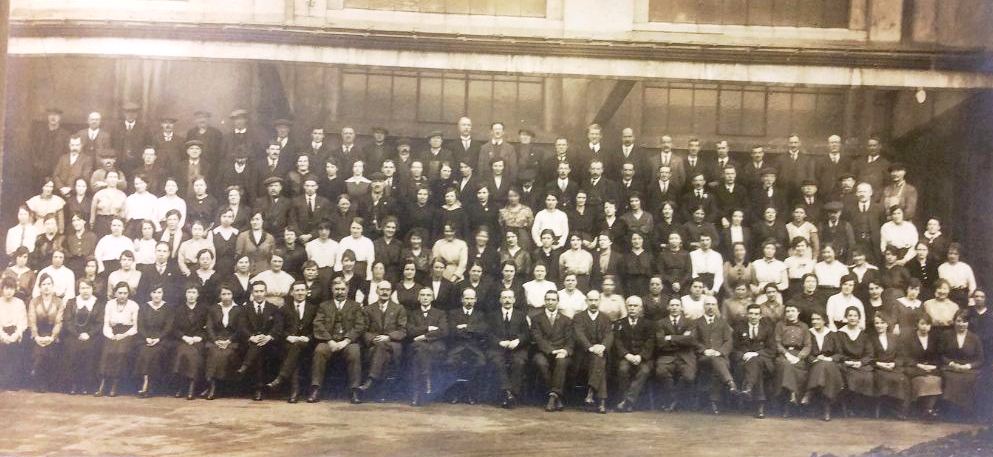
With the fruition of the women’s suffrage movement leading to women over 30 gaining the vote, the pressures of a new female electorate allowed progressive changes in law. The 1919 Sex Disqualification Removal Act was part of this first wave of legislation; this act fundamentally argued “A person shall not be disqualified by sex or marriage from the exercise of any public function”. 5
The Sex Disqualification Removal Act 1919
In 1922 Nancy Astor, the first woman to take her place as an MP in 1918, asked whether the post-war replacement of women cable workers by men meant a breach of the Sex Disqualification Removal Act . Viscountess Astor argued it could not be reasoned that women were unsuitable for the job, as they had taken this role throughout the war. The response from the Postmaster General was definite – ultimately the choice to terminate a contract rested with the employer.
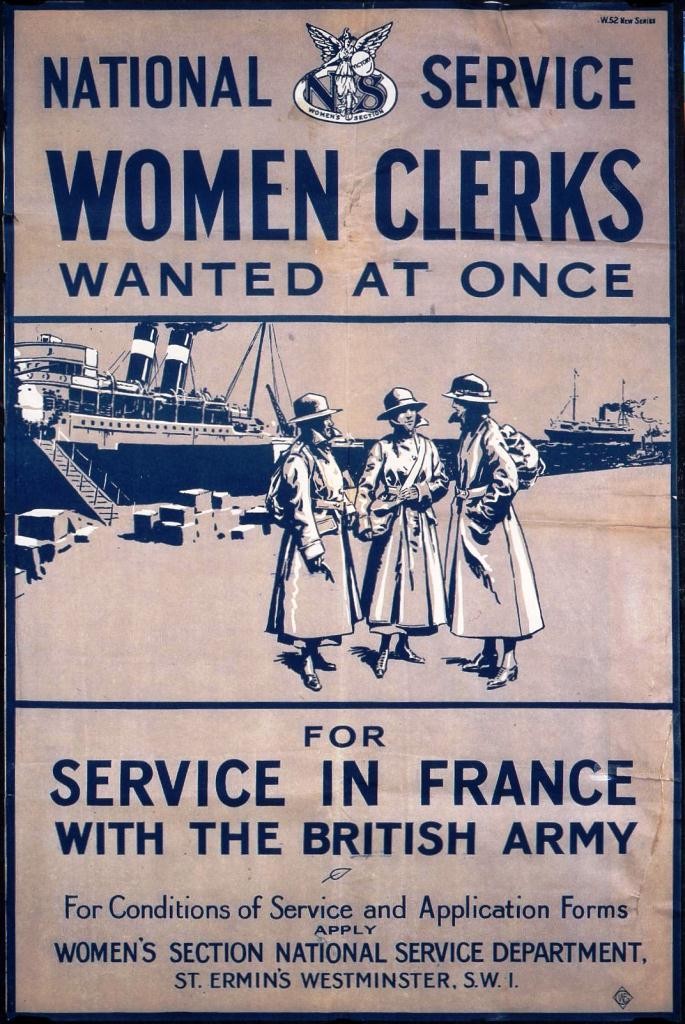
Therefore while this legislation showed a positive move for female civil servants, the reality was that the act was very rarely evoked and with very little success. The failure of this act is most significantly demonstrated by the continuation of the marriage bar until 1946, despite this legislation specifically stating marriage could not be used to disqualify someone from a public function.
The removal of the marriage bar
1946 therefore heralded a significant watershed moment of change for all women in the civil service, with the recognition that a woman irrespective of marriage should have the same opportunities as male employees. This progressive change followed the removal of the marriage bar in teaching and the BBC in 1944 and preceded the wider removal of the marriage bar in other areas of public life 6. This same year women were also allowed to work for the Foreign Office for the first time.
However negative attitudes towards married women workers continued: summed up in a document dated shortly after the act from 1947-51 stating “Naturally, their home comes first with them, and if their husbands or children are ill, they regard it as their duty to remain at home and look after them”. Despite the removal of the marriage bar in the civil service women themselves largely expected to leave work upon marriage.
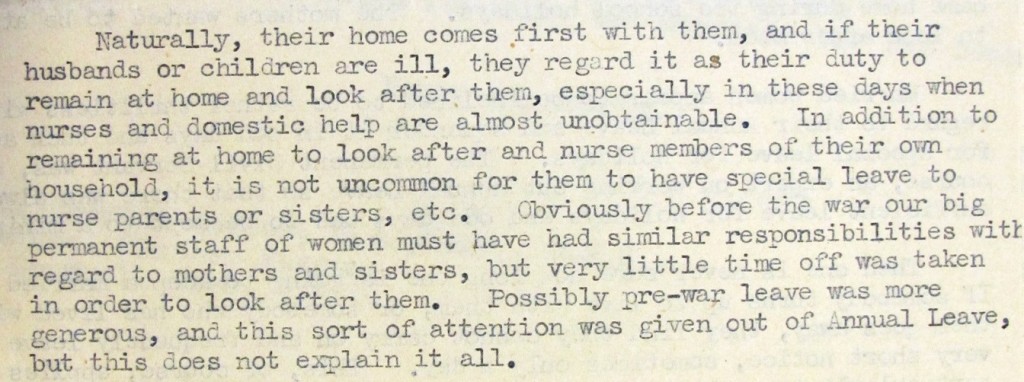
The road to equal pay
Baroness Evelyn Sharp’s appointment to Permanent Secretary in 1955 represented a significant advance for women. Baroness Sharp had been among the first women to complete the examination for the Administrative Grade in 1926 a year after it was opened to women. However even Evelyn is quoted commenting that she disagreed with equal pay, referring to the “unreliability of women” and their lesser financial responsibility compared to men. She later requested these comments to be re-phrased 7.
Upon becoming deputy secretary in the Ministry of Town and Local Government Evelyn was one of the few women to receive equal pay: as no woman had previously reached her level, there was no women’s equivalent pay grade in place 8. The civil service was often targeted by women’s organisations as a place for reform on equal pay as it was a workforce where women often did the same jobs as men, making the argument of equal work for equal pay stronger 9.
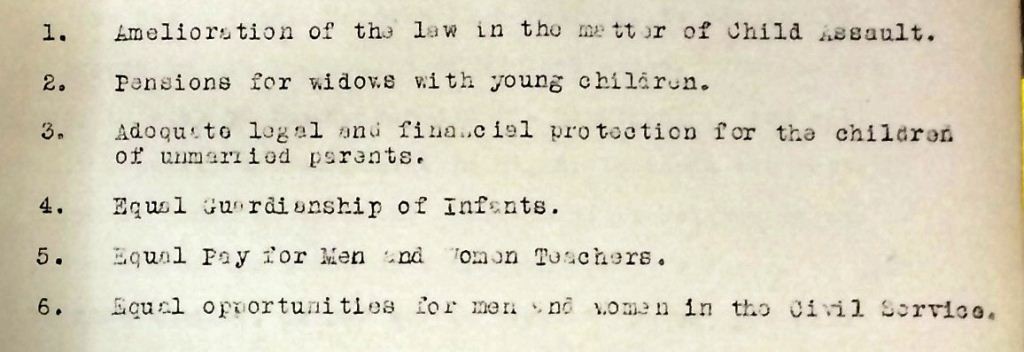
The Six Point Group, a women’s rights organisations from the time lobbied the government around six principle issues, one of which was “equal opportunities for men and women in the Civil Service”. Amongst agitation from numerous women’s groups in the 1930s the government won a vote in 1936 on the introduction of equal pay to the civil service. The government won this vote by an unusually small majority, showing how controversial this issue was at the time, and a failed vote of confidence forced by Stanley Baldwin then vetoed this result 10.
Equal pay to the civil service was finally completed on January 1st 1961 over 20 years later, after a phased introduction from 1955. This legislation preceded the wider Equal Pay Act of 1970.
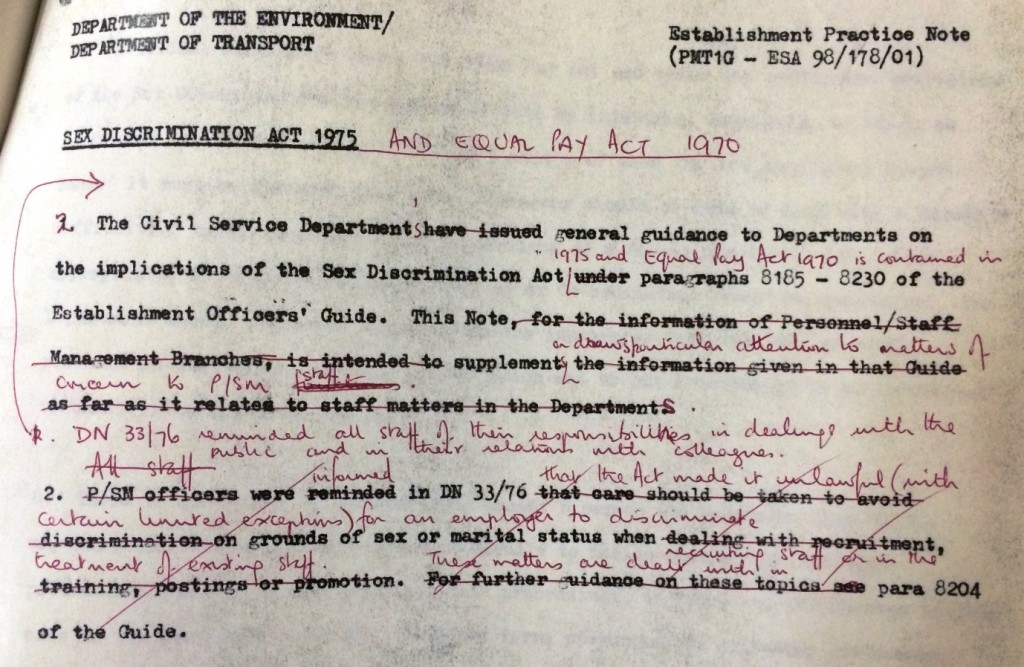
1975 Sex Discrimination Act
The final significant legislative change for women was the 1975 Sex Discrimination Act. This legislation significantly stated that, for women in the civil service, referring to the areas of housing, education and employment women were to be treated the same as men 11. Following the repeal of the marriage bar and implementation to equal pay this act represented a significant change from the opinion of married women as a “perfect nuisance” to the Treasury.
Keep tabs on the past. Sign up for our email alerts.
25 comments
Comment by Heather Rowlingson posted on
Fascinating article. I particularly liked sight of the original draft of the SDA and the fact that equal pay was achieved in the 1950s at Deputy Secretary level - because there was no Women's pay grade in place!
Comment by Martin Stanley posted on
Great blog! Those interested in this area might also like to look at this web-based resource: http://www.civilservant.org.uk/women-homepage.html .
Comment by Andrew Brown posted on
Hmm - it does not appear to be a draft of the SDA at all, rather it's draft supplementary guidance on the SDA and EPA for DoE/DTpt staff.
Comment by Charlotte posted on
This is an interesting article when you consider that a lot of this preconceived bias towards women is based on traditional Machiavellian and Hobbesian views on how a state and its bureaucratic departments should be governed. For example, Hobbes considered the natural state and life of 'man' to be nasty, short and brutish. Subsequently States, Government and Bureaucratic Services such as the Civil Service were set up to reflect this 'masculine state' and defend the 'paternal' right to property and rights of man and princes.
The rights of women and children did not even feature in these political and bureaucratic manifestations as this demographic was seen to be the property of man and ruling princes. Furthermore these rights of man only focused on those men who had land and property and certainly did not include the labourers, the poor and their dependencies. It was only Karl Marx and John Stuart Mill who actually began to mention women and workers (poor women fell under both of these categories) in their political agendas. To which some wonderful men and women who supported equal rights and opportunities began to take this further. We have come a long way since Hobbesian times but unfortunately in some areas the 'Traditional Masculine State' is still being invoked unconsciously. It is only when we begin to think in more gender neutral terms that we can move away from this traditional view which appears to be holding society back.
Comment by Rebecca Alford posted on
We still haven't arrived at a position of complete gender equality in the Civil service. The PCS Union has brought equal pay claims which, to my knowledge, are still unresolved because the legal process is tortuously slow. Whilst it is right that we celebrate the progress made over the decades, gender equality is still a long way off.
Comment by Lesley Gordon posted on
why on earth is this article trailed with the quote " a perfect nuisance"? This was not clever or funny then and it is not clever or funny now. And sadly it can serve to reinforce stubbornly held views amongst some of the patriarchy that still exists in the civil service today.
Comment by N posted on
Gender equality will only ever be achieved when men with egos recognise that they need to let go and realise that women are equally as capable that they are. Whilst it does not happen often there is still an attitude among some (not all) men within the civil service that women cannot possibly do the job as well as they can, which is not only disappointing but a reflection of how far we still have to go to really be equal.
Comment by Jane Romilly Hague posted on
I agree - totally fascinating. And I agree regarding the progress still to be made, unfortunately, on gender equality. I was brought up in the 1970s where it wasn't the absolute norm for women to go to University after school so I hope that has changed. And when we get onto literature written by 'The Second Sex', I hope that Alice Walker et al is now taught alongside Dickens in schools.....!
Comment by Jane posted on
I worked with a female colleague who was promoted as a single woman to executive officer in - I believe - the late 50s/early sixties. She then got married, and told me that she was returned to the administrative grades as a result of becoming a married woman. Has anybody else experienced this or heard of this happening? Easy to think I must have imagined it!!
Comment by Graham Payne posted on
I my hierchary women outnumber men senior managers (HEO and above) by 4.5 to one so I think it's us chaps that need better representation. I put this to the union every year but it goes against their whole raison d'etre to see things from a different perspective
Comment by Angie posted on
Excellent Article - Since I joined the Civil Service there has been much progress. This is to be celebrated, but we still have a way to go, there are still "pockets" of "old school" out there. I remember in the 1990s almost 20 years after the introduction of Sex Discrimination Legislation, as a young mum working as a full-time EO, I was told when I applied for a team supervisor post, that "As I had young children I needed to remain in a non-staff role and would not be considered for the Supervisor role because I should be concentrating on my family and would not be able to dedicate the time needed to staff issues" An older HEO near retirement perhaps? No, a similar age to me. There are still people to “convince” long after attitudes should have changed.
Comment by Karen Camplin posted on
Interesting article and I'm proud to be a 'perfect nuisance'!
Having spent all of my student and engineering working life surrounded by male colleagues, I just get on with the task at hand without having to worry whether I will still have my role if I get married, pregnant or my child/family gets ill! These ladies are worth celebrating for the work they did in difficult times, and something I hadn't appreciated we had to argue so much for.
It's made me realise the history behind one of my first sexist comments...two days into first job.... "what's a young lass like you doing working here (steel industry), won't you be going off and getting married/having babies?"
Comment by A. posted on
I found this article very interesting, thank you for the effort that went into publishing it.
I'm always interested in equal rights pieces, but for all the changes in attitude towards women in the workplace sometimes I would like to read something that focuses also on the attitude towards men in the home.
I've found that over my time in the Civil Service whenever a female colleague of mine has gotten married/had children/etc. they've been accomodated extremely well. However my male colleague [who later left the Civil Service to become a stay at home father, I believe] did not get the same level of understanding, which I find disappointing.
I believe that whilst we should certainly be aware that women are equal to men in the workplace, we still [subconciously perhaps] view that men should be the ones to work and support their families and don't give them the same opportunities for paternal leave/part time working/etc. that we would give their female partners.
I hope that one day this attitude will change.
Comment by Jo Bevan posted on
A very interesting article. Thanks.
Comment by Marisa S posted on
https://www.gov.uk/government/publications/information-about-the-number-of-women-working-within-the-department-for-education/information-about-the-number-of-women-working-within-the-department-for-education
This FOI response seems appropriate here to highlight that it likely depends on the civil service department. Graham, two years ago there were 1696 men in grades HEO and above in DfE compared to 1305 women so men are certainly not under-represented there.
Comment by R posted on
Very good and it highlights the continuing desire to be considered equal that is wider than gender. The underlying conscious and unconscious bias applies to all who can be identified as different. As my parents told me, "you have to be twice as good to be considered equal."
Competition is fine and to be welcomed as long as the rules are fair and fairly applied.
Comment by Moreblessing Barker posted on
We have come a long way and that calls for celebartion! There is also still a very long way to go. The rules and regulations in place makes people stay politically correct but there are lots of ingrained attitudes and beliefs that need to be un-learned. This covers both the gender and racial arena. We, in this era, need to keep pressing on to over come these attitudes. I am a professional and I know I am good at my job, I have had a lot negative attitudes and comments both gender and racial related. I am focused on what I want to achieve and I choose to ignore any negativity. I also support other women who have bad experiences in the workplace so that they can rise above this and focus. We do have a long way to go still....
Comment by Jane Kerrison posted on
It is interesting to see how far we have come, and what we now take for granted.
My mother was an office worker from the late 1940s until the mid 1950s and she said that men were allowed to smoke in the workplace, whilst women were not, it was just accepted! After many years she was promoted to company cashier, a job previously held by a man and she was only paid half the amount that he had been. She didn't think anything of it at the time - but today it wouldn't be tolerated.
Comment by Anon posted on
A very interesting article!
Whilst this shows how far we have come, there is still much to do in terms of gender equality. Whilst women are "allowed" to work and hold positions of authority and responsibility, progress is still hindered by the fact that too many employers (both inside and outside of the Civil Service) are still biased against part-time workers.
Too many job opportunities are advertised as "full-time" and written in a way that either discourages applications from part-time workers, or places another barrier such as current policy that if you apply for another role - transfer or promotion it is on a full-time basis and if you wish to be part-time you must submit a new flexible working request.
In addition to this, many employers will still choose to take on the full-time employee over the part-time employee conveniently finding "reasons" the full-time applicant was stronger or using "business need" as the cover-all reason in case they get pulled up on a discrimination case.
As the majority of part-time workers are women, this practice has a negative impact on equality and just shows how far we still have to go - even in 2015.
Comment by Jacquetta Brown posted on
This is interesting for me. My mother worked initially at Chatham Dockyard, then in the National Assistance Board, DHSS, DSS and other incarnations. She thought she was one of the first married women to carry on after marriage. She is also pretty sure she was the first woman to be allowed to continue after pregnancy. As you had to leave work, and not return, once you were pregnant, she hid it from her manager and most of her colleagues, with loose clothing etc. When it was finally announced that pregnant women could stay (returning after 6 weeks unpaid maternity leave), she went to her manager and announced she was applying for leave. Imagine his shock when she explained that she was due in 2 weeks time....she had been about to resign but was hanging on hoping for the change ( and needed the money!). While it is possible that someone else was quicker off the mark, she thought she was possibly the first. She was always motivated by equality issues.... she was denied permision to go on courses that would lead to promotion as she was a woman. Never say that anti-discrimination legislation (and internal regulations) isn't needed!
Comment by Graham Payne posted on
I have looked at the national figures in my area of work in 2014 70.3% of HEO/SEO were women compared to just 29.7% men, this is quite closely reflected in the data on promotions which are 68.9% women and just 31.1% men. I think the competency based promotion process disadvantages men and the figures certainly appear to confirm this.
Comment by Mark J posted on
Thank you for the interesting history lesson, so we can acknowledge that there were gender roles in the olden days and even in those times some men held very backward views, especially from our modern point of view. Now that women outnumber men at universities and females in their 20s and 30s are out-earning their male counterparts, I look forward to these matters being addressed in the spirit of equality between the sexes - not sure I should hold my breath.
Comment by Victoria posted on
Despite the elimination of the Marriage Bar in 1946, at least some Government Departments continued to apply it in practice for several years. My mother joined the Civil Service in 1945/6 & was forced to leave in 1950, when she married. At the time, her Department also 'capped' the number of women allowed promotion, openly admitting that less suitable male candidates would be given the posts, as 'it would create problems if we promoted too many women'! In my own career, I have still encountered entrenched viewpoints over what women are intellectually capable of (despite proof to the contrary) and been told it was 'pointless to promote women, as they'll only leave to raise a family'. When you add in current comments about 'blonde moments' (how does hair colour affect your intelligence or ability?), you can see there is still a long way to go.
Comment by A. posted on
Just fascinating.
Comment by Caroline M Thacker posted on
Women had to make a perfect nuisance of themselves. If the women in the past had not made a perfect nuisance of themselves, then we would still be treated like second class citizens!